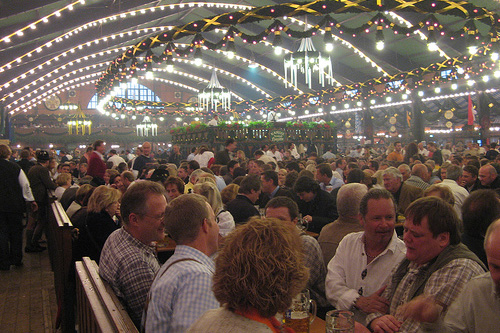Published October 2009, Toronto Globe & Mail
In Berlin, nothing is forgiven or forgotten. So says the inscription at Weisse Kreuze, a memorial to those who died trying to escape East Germany. While many Second World War and Cold War remnants have been swept under the rug, some vital relics remain. Kristin Luna takes us there.
Brandenburg Gate
What some might consider the face of the Cold War, Brandenburg Gate was constructed in the 18th century based on the gateway to the Acropolis. It is the only of the city’s 18 gates to survive both wars. Many famed American presidents – John F. Kennedy, Ronald Reagan, Bill Clinton and, most recently, Barack Obama – and, likewise, German chancellors have given prominent speeches in this plaza.
Victory Column
The Victory Column, or Siegessäule, was erected in the 19th century to commemorate the military successes of Prussia during the Wars of Unification. In 1938, the Nazis commissioned Adolf Hitler’s favourite architect, Albert Speer, to move the column to its current location in the former Königsplatz (now Platz der Republik) as a focal point for mounting conflict.
Potsdamer Platz and Checkpoint Charlie
In Potsdamer Platz, get your passport stamped with “official” souvenir symbols indicating that you’ve crossed into East Berlin. Take home photographic evidence that you met “Checkpoint Charlie” – no longer just a defining symbol of the Cold War, but an open-air exhibit with actors posing as allied military policemen – which has become a prime spot for photo ops (though you’ll be forced to fork over a euro for “Charlie’s” trouble).
Bike and video bus tours
Berlin on Bike (http://www.berlinonbike.de) offers six interactive tours that explore the city with a seasoned guide. Most popular is the 11-kilometre Wall Tour, which pedals past remaining segments in both the East and West, train stations and border crossings and even pays a visit to the last remaining watch tower, now guarded over by the brother of its first casualty. Videobus Tours (http://www.videobustour.de) provide a vivid glimpse of what happened during the war through newscasts and video footage streamed overhead in the bus en route to points of interest.
Memorial to the Murdered Jews of Europe
One block from the Brandenburg Gate, 2,711 geometric slabs hover ominously in an homage to those who died in the Holocaust. Designed by architect Peter Eisenman, the five-acre Memorial to the Murdered Jews of Europe forms a forest of pillars that create an optical illusion: They appear to protrude from the earth just high enough to serve as benches, but actually range from eight inches to nearly 16 feet tall, fully engulfing visitors as they delve into the concrete maze.
*****










